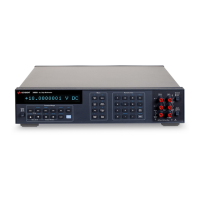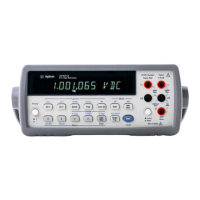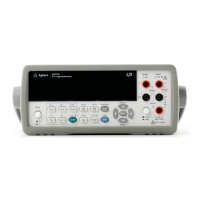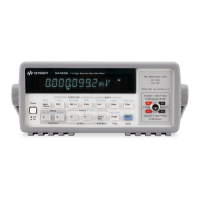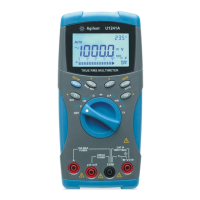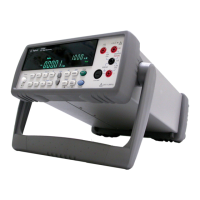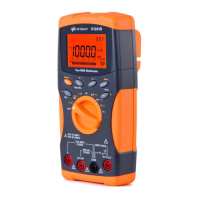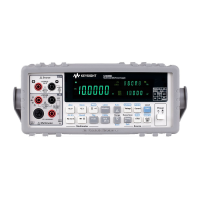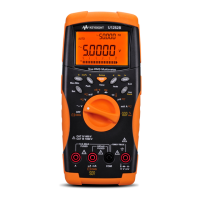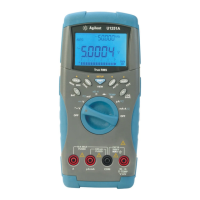34410A/11A/L4411A User’s Guide 105
Measurement Tutorial 4
Removing Test Lead Resistance Errors
To eliminate offset errors associated with the test lead resistance in 2–wire
ohms measurements, follow the steps below.
1 Short the ends of the test leads together. The multimeter displays the test
lead resistance.
2 Press . The multimeter will store the test lead resistance as the 2–wire
ohms null value, and enable that value to be subtracted from subsequent
measurements.
See also “Null Measurements” on page 59.
Minimizing Power Dissipation Effects
When measuring resistors designed for temperature measurements (or other
resistive devices with large temperature coefficients), be aware that the
multimeter will dissipate some power in the device–under–test.
If power dissipation is a problem, you should select the multimeter's next
higher measurement range to reduce the errors to acceptable levels. The
following table shows several examples.
Errors in High Resistance Measurements
When you are measuring large resistances, significant errors can occur due to
insulation resistance and surface cleanliness. You should take the necessary
precautions to maintain a "clean" high–resistance system. Test leads and
fixtures are susceptible to leakage due to moisture absorption in insulating
materials and "dirty" surface films. Nylon and PVC are relatively poor
insulators (10
9
Ω) when compared to PTFE insulators (10
13
Ω).
Leakage from nylon or PVC insulators can easily contribute a 0.1%
error when measuring a 1 MΩ resistance in humid conditions.
Range Test Current DUT
Power at Full Scale
100 Ω 1 mA 100
μW
1 kΩ 1 mA 1 mW
10 kΩ 100
μA 100 μW
100 kΩ 10
μA10 μW
1 MΩ 5
μA25 μW
10 MΩ 500 nA 2.5
μW
UG_ED5.book Page 105 Thursday, March 1, 2012 11:28 AM
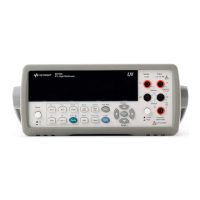
